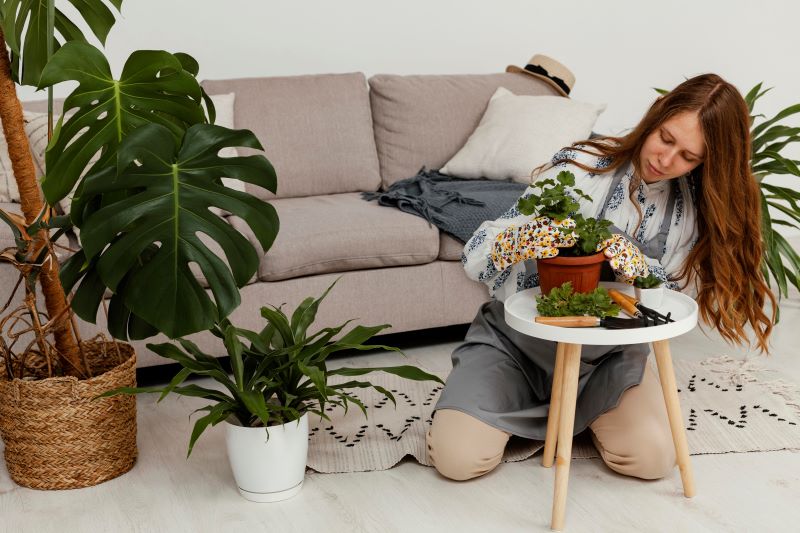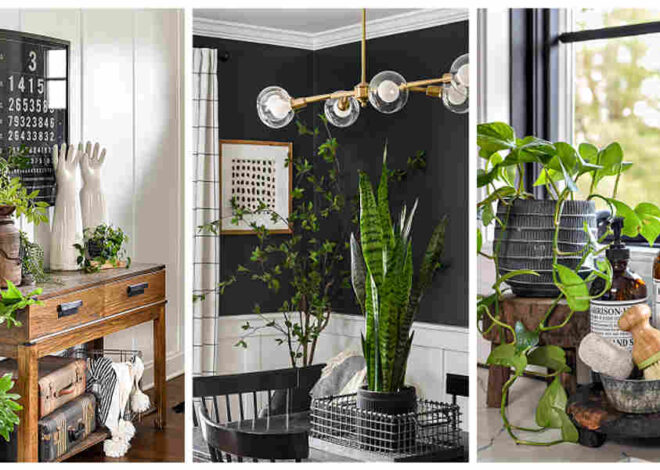
Embracing Nature: 10 Ways to Incorporate Natural Elements into Home Design
Introduction to Incorporating Natural Elements into Home Design
Designing a home that seamlessly blends the beauty of nature with modern living is a growing trend. Incorporating natural elements into your home’s design not only enhances the aesthetic appeal but also provides numerous health and wellness benefits. From abundant natural light to soothing water features, there are countless ways to bring the outdoors in and create a harmonious, rejuvenating living space.
In this comprehensive guide, we’ll explore 10 key strategies for incorporating natural elements into your home design. Whether you’re building a new home or refreshing an existing space, these tips will help you cultivate a sanctuary that nourishes the senses and connects you to the natural world.
1. Bring in Lots of Natural Light
Importance of natural light for health and mood Exposure to natural light is essential for our physical and mental well-being. Sunlight exposure boosts mood, energy levels, and vitamin D production, all of which contribute to overall health and wellness. Natural light also makes spaces feel more open, airy, and connected to the outdoors.
Ways to maximize natural light in home design To maximize natural light in your home, consider incorporating large windows, skylights, and sliding glass doors. Light-colored walls and ceilings can also help reflect and distribute natural light throughout the space. Opt for sheer window treatments that allow sunlight to filter through, and position rooms to take advantage of the sun’s path throughout the day.
Examples of homes with abundant natural light Homes with floor-to-ceiling windows, atriums, or sunrooms are excellent examples of how to bring an abundance of natural light into the living space. Light-colored interiors with minimal window coverings also help create a bright, airy atmosphere.
2. Incorporate Living Plants
Benefits of having plants in the home Bringing living plants into your home design offers a wealth of benefits. Plants help purify the air, improve indoor air quality, and reduce stress levels. They also add natural beauty and a tangible connection to the outdoors.
Types of plants that thrive indoors When selecting plants for your home, consider low-maintenance options like succulents, cacti, and air plants that don’t require soil. Flowering plants, such as orchids and peace lilies, can also add a touch of vibrant color. Herbs for the kitchen are another great choice, providing both aesthetic appeal and practical use.
Creative ways to display plants in home design Showcase your plants in unique ways, such as hanging them in macrame or wire holders, placing them on shelves and windowsills, or creating living walls and terrariums. These creative plant displays not only serve as functional greenery but also add visual interest and texture to your living spaces.
3. Use Natural Building Materials
Advantages of natural building materials Incorporating natural building materials into your home design offers numerous advantages. These materials are often sustainable, eco-friendly, and durable, while also providing unique textures and aesthetics that can’t be replicated with synthetic alternatives.
Examples of natural building materials Some of the most popular natural building materials include wood (for floors, beams, and furniture), stone (for countertops, fireplaces, and accent walls), bamboo (for floors, furniture, and decor), cork (for floors and bulletin boards), and rattan or wicker (for furniture and decor).
Ideas for incorporating natural materials Showcase the natural beauty of these materials by incorporating them into your home’s design. Ideas include wood beams or shiplap accent walls, stone fireplaces or backsplashes, bamboo floors or furniture, and rattan light fixtures or end tables.
4. Bring in Natural Textiles and Fabrics
Benefits of natural textiles Natural textiles, such as cotton, linen, wool, silk, and hemp, offer a range of benefits. They are breathable, comfortable, and durable, while also being sustainable and eco-friendly.
Types of natural textiles Incorporate natural textiles throughout your home, from cotton or linen bedding and curtains to wool area rugs or throw blankets, silk accent pillows or wall hangings, and hemp upholstery on furniture.
Ways to incorporate natural textiles By using natural textiles and fabrics, you can create a warm, inviting atmosphere that connects your living spaces to the natural world.
You may also read (smart home technology save time money)
5. Create a Relaxing Water Feature
Calming effects of water in home design The soothing sounds and reflective surfaces of water features can have a profoundly calming effect on the mind and body. Incorporating a water element into your home design can evoke a sense of tranquility and connection to nature.
Types of indoor water features Consider adding a tabletop fountain, wall-mounted water feature, indoor pond or aquarium, or even a shower waterfall to your home. When choosing a water feature, consider its placement for optimal sound and visibility, as well as any maintenance or safety requirements.
Considerations for indoor water features Carefully plan the placement and design of your indoor water feature to ensure it enhances the overall ambiance of the space. Take into account factors such as the sound, visibility, and safety concerns, especially if you have young children or pets.
6. Incorporate Natural Scents
Benefits of natural scents in the home Integrating natural scents into your home design can have a profound impact on your mood, promoting relaxation and reducing stress. Natural scents can also create a welcoming, inviting atmosphere.
Natural scent sources Explore natural scent sources, such as essential oils, candles made from natural waxes, potpourri made from dried flowers and herbs, and incense made from natural resins.
Ways to use natural scents Strategically place essential oil diffusers, scented candles, potpourri bowls, and incense holders throughout your home to create a harmonious, nature-inspired ambiance.
7. Create a Cozy Outdoor Living Space
Importance of indoor-outdoor living Blending indoor and outdoor living spaces can extend your usable square footage and create a seamless flow between the two environments. This connection to nature can promote relaxation, encourage entertaining, and foster a greater appreciation for the outdoors.
Elements of a cozy outdoor living space To create a cozy outdoor living space, consider incorporating comfortable seating (such as sofas, chairs, or hammocks), shade structures (like pergolas, awnings, or umbrellas), lighting (string lights, lanterns, or candles), and heating elements (fire pits or patio heaters).
Examples of beautiful outdoor living spaces Inspiration can be found in covered patios with plush seating, screened-in porches with rocking chairs, decks with built-in benches and planters, and courtyards with fountains and lounge chairs.
8. Bring in Natural Artwork and Decor
Benefits of natural artwork and decor Incorporating natural artwork and decor into your home design adds visual interest, texture, and a deeper connection to the outdoors. These pieces can serve as focal points or conversation starters, enhancing the overall aesthetic of your living spaces.
Types of natural artwork and decor Consider framed nature photography, paintings of landscapes or botanicals, sculptures made from wood, stone, or metal, macrame wall hangings or plant holders, and displays of driftwood or seashells.
Ideas for displaying natural artwork Showcase your natural artwork and decor in creative ways, such as gallery walls, floating shelves, ledges above fireplaces, and windowsills for potted plants and terrariums.
9. Create a Meditation or Yoga Space
Benefits of a dedicated meditation space Designating a quiet, serene space for meditation or yoga can promote relaxation, stress relief, and a deeper connection to oneself and the natural world. This dedicated retreat can provide a much-needed respite from the demands of daily life.
Elements of a meditation or yoga space When designing a meditation or yoga space, focus on comfortable seating (such as floor cushions or meditation benches), natural lighting (from large windows or skylights), calming colors (earth tones or pastels), and natural decor (plants, crystals, or candles).
Examples of beautiful meditation spaces Inspiration can be found in sunrooms with floor-to-ceiling windows, spare bedrooms with minimalist decor, outdoor yoga platforms surrounded by nature, and attic spaces converted into serene retreats.
10. Incorporate Natural Sounds
Benefits of natural sounds in the home Incorporating natural sounds into your home design can help mask unwanted noise, create a sense of calm, and promote relaxation. These soothing sounds can also evoke a deeper connection to the natural world.
Types of natural sounds to incorporate Consider adding tabletop fountains or indoor waterfalls, chimes made from natural materials, nature soundtracks or white noise machines, and outdoor speakers for bird songs or wind chimes.
Ideas for using natural sounds Strategically place tabletop fountains in home offices or bedrooms, hang chimes on covered porches or in gardens, play nature soundtracks through smart speakers, and use outdoor speakers to create a soothing backyard ambiance.
Conclusion
Incorporating natural elements into your home design is a powerful way to create a healthier, more beautiful living space. By embracing the beauty and benefits of natural light, plants, materials, textiles, water features, scents, outdoor living, artwork, and sounds, you can cultivate a sanctuary that nourishes the senses and connects you to the natural world.
Start small by introducing a few of these natural elements into your home, and watch as your living spaces transform into a harmonious, rejuvenating oasis. Embrace the power of nature, and let it inspire you to craft a home that truly reflects your connection to the great outdoors.
You may also read (budget friendly decor online shopping)


